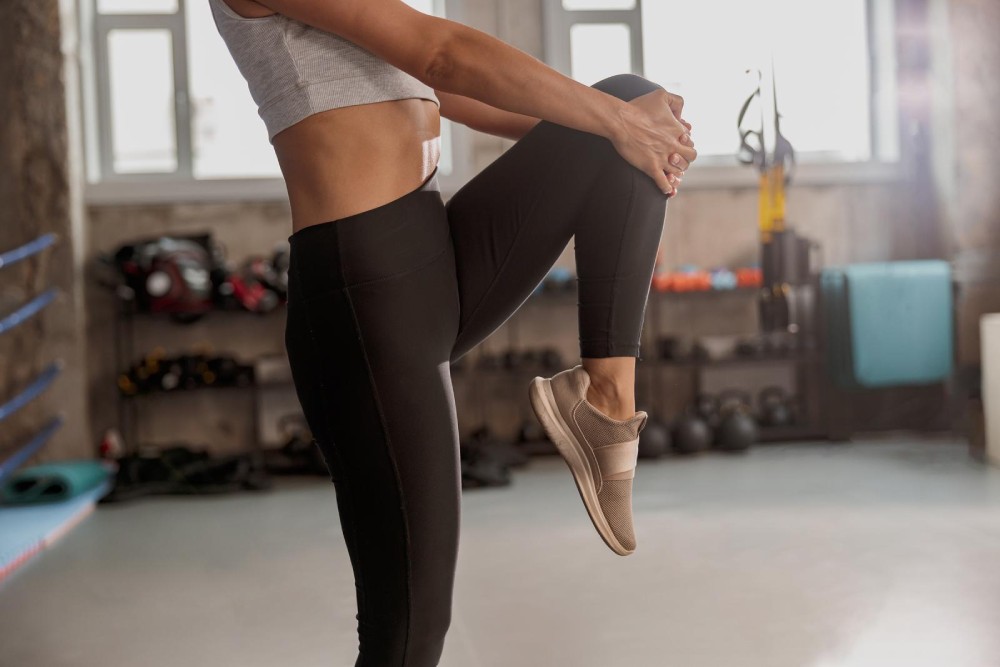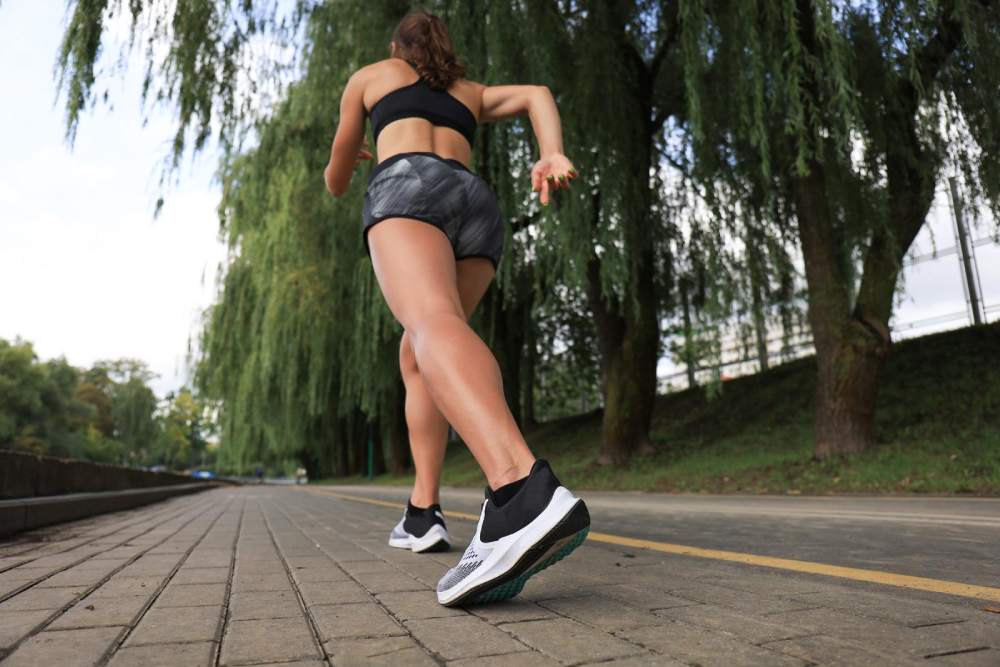You may have heard conflicting statements about outdoor running, so is running on the road bad for your knees? It can be hazardous, but not if you come prepared.
A lot of people often wonder if running on the road does damage to their knees. Yes, it can be damaging, but it doesn’t necessarily have to be. The main problem is how people prepare before a run. Below, I’ll share some tips on reducing stress on your knees while running and a few alternative surfaces you can try running on.
Contents
Reducing Stress On Your Knees Before A Run

One of the biggest mistakes people make before running is not preparing their bodies for this exercise. It’s often assumed that running is the most straightforward exercise to pick up and start because it doesn’t require special equipment, and nearly everyone can run or at least jog. But, when people start running without the proper preparation, it often leads to injuries. A body not calibrated correctly to handle the stress of running is more likely to suffer sudden and cumulative injuries.
I would advise anyone who’s interested in running or currently running but experiences regular pain to consult a professional running coach or fitness trainer. Just like any other exercise, running requires people to use proper form. Without proper form, you are more likely to become tired, injured, and discouraged from running.
Hire A Pro
A running coach can examine your gait and help you make certain corrections to achieve the ideal form for your body. One thing that sets running apart from other exercises is there is no “one-size-fits-all running form.” Everyone’s body has a unique structure. A running coach can examine your natural strengths and weaknesses, foot structure, and many other factors to help you build the ideal running form for your body.
A professional trainer or coach will want to help you build up strength around your knees by strengthening your support muscles. These exercises will improve stability, mobility, and strength while making you feel much lighter as you run. The difference between running with weak support muscles and strong support muscles is quite dramatic. When your support muscles are strong, it can feel like you’re riding smoothly on your legs more so than slamming your feet rapidly on a hard surface while sending shockwaves throughout your body.
Stretching And Running Shoes

Stretching and warm-up exercises such as jumping jacks can also significantly prepare your body for a run. It’s always best to consult a professional fitness trainer or running coach concerning the best stretches for your body type. Using the wrong stretches or stretching improperly can also cause injuries.
And finally, you will want to invest in several good pairs of running shoes. It’s recommended that runners replace running shoes every 300 to 500 miles or four to six months. Finding the right running shoe can be tricky, so it’s better to go to a dedicated running store rather than a generic shoe store.
At a running store, they are likely to have experts who can examine your foot and even judge your gait to help you find the best shoes for your body. You might also be wondering, can you run barefoot on a treadmill?
Mix-in Other Activities
Another tip is engaging in another cross-training exercise, such as biking or swimming, that puts less stress on your knees while building those support muscles. These activities can also provide incredible cardiovascular exercise without overtraining the tissues often used for running. Mixing things up can make a huge difference. For example, you may run three days per week, cycle twice a week, and swim once a week.
The Most Knee-Friendly Running Surfaces
Another common mistake people make is not trying different running surfaces. Other surfaces, such as trails, tracks, and even beaches, can relieve your knees and even engage different muscles. Here are a few alternative running surfaces.
Grass
Without question, natural grass is often regarded as the best surface to run on. Many love how it makes them feel closer to nature, while others say it provides the ideal balance of cushioning and firmness compared to any other running surface.
But don’t be fooled. While the grass may absorb some impacts compared to harder surfaces such as concrete, your muscles are still working incredibly hard. This means you can build leg strength pretty quickly. For wet grass, you may use spiked shoes for better traction.
However, grass can also be uneven and dangerous, especially for runners with bad ankles. Those who suffer from allergies may also find this surface problematic. Grass’s softness can tire legs more quickly than harder surfaces. Plus, the owners of the best grass-running surfaces, such as freshly cut lawns found in parks and golf courses, are often not too happy about finding runners trampling on their greens.
Trails
Woodland trails are great venues if you want to mix up the scenery. The surface is often sandy and soft, much like grass. And many trails go on for several miles. This running surface is a bit easier on the legs.
However, you may encounter uneven surfaces, mud, rocks, and other obstructions, making running more challenging and injuries more likely. For trails, you may also want to invest in special running shoes designed for running on this terrain.
Tracks
Synthetic tracks are generally more forgiving than concrete or asphalt roads. However, every lap features curves that can stress the ankles, hips, and knees, making long running sessions difficult for some runners. Tracks are often helpful in building speed.
Treadmills
Treadmills provide a much softer and more forgiving running surface than all the surfaces mentioned above, plus you don’t have to concern yourself with outdoor weather conditions that can impact your running surface since most treadmills are used indoors. However, many runners find treadmills boring as you mainly run in places with no change of scenery or stimulation, such as light breezes, smells, and sounds. Check out our guide on can running shoes go in the dryer.
FAQs On Is Running On The Road Bad For Your Knees?
Is walking on the road terrible for your knees?
Walking on a concrete or asphalt road can present the same challenges as running if your body isn’t correctly conditioned for this activity. Although, if you don’t have pre-existing knee issues, it’s not any more likely to cause knee damage. However, if your gait is filled with bad habits, this can cause injuries.
Can you run without damaging your knees?
Many studies have found that running on surfaces isn’t necessarily bad for your knees or causes injuries. Many attribute injuries such as knee damage to weak support muscles, poor form, overtraining, and the overall lack of preparation.



